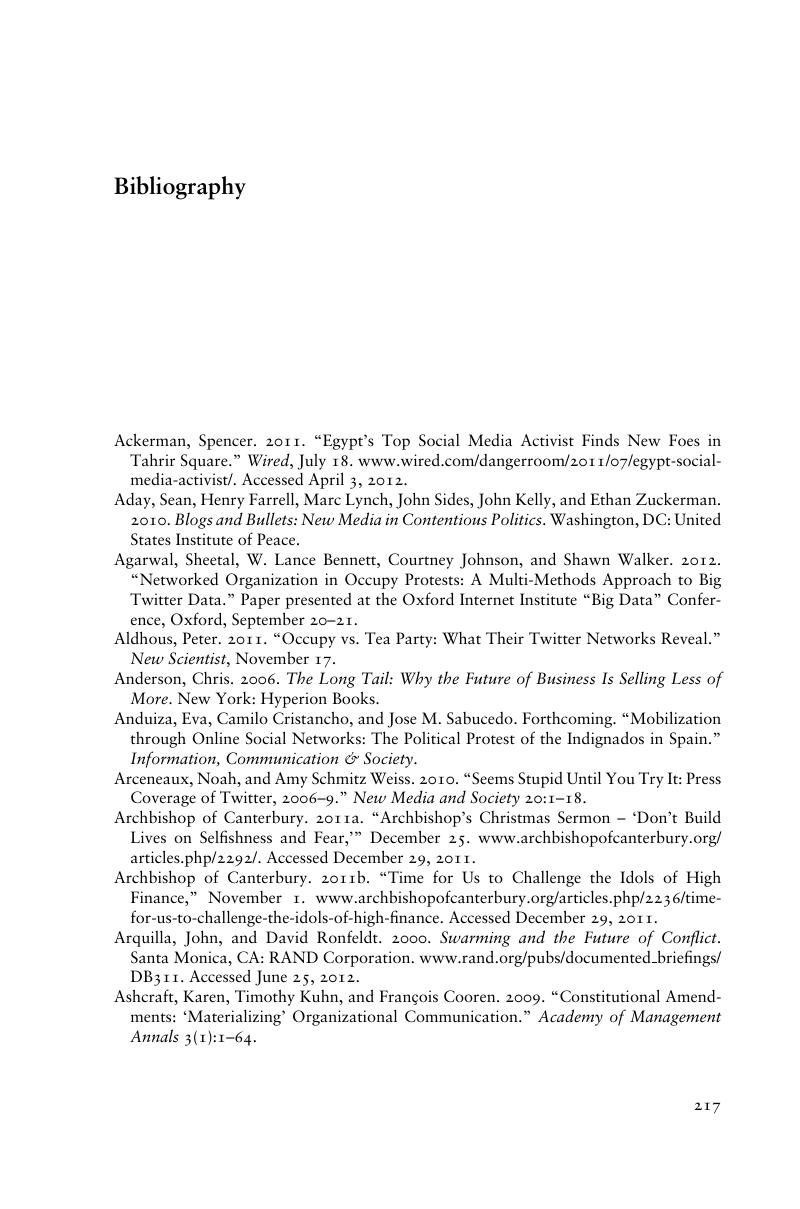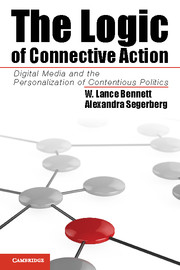Book contents
- Frontmatter
- Contents
- List of Tables and Figures
- Acknowledgments
- Introduction
- 1 The Logic of Connective Action
- 2 Personalized Communication in Protest Networks
- 3 Digital Media and the Organization of Connective Action
- 4 How Organizationally Enabled Networks Engage Publics
- 5 Networks, Power, and Political Outcomes
- 6 Conclusion
- Bibliography
- Index
- References
Bibliography
Published online by Cambridge University Press: 05 June 2014
- Frontmatter
- Contents
- List of Tables and Figures
- Acknowledgments
- Introduction
- 1 The Logic of Connective Action
- 2 Personalized Communication in Protest Networks
- 3 Digital Media and the Organization of Connective Action
- 4 How Organizationally Enabled Networks Engage Publics
- 5 Networks, Power, and Political Outcomes
- 6 Conclusion
- Bibliography
- Index
- References
Summary

- Type
- Chapter
- Information
- The Logic of Connective ActionDigital Media and the Personalization of Contentious Politics, pp. 217 - 234Publisher: Cambridge University PressPrint publication year: 2013



